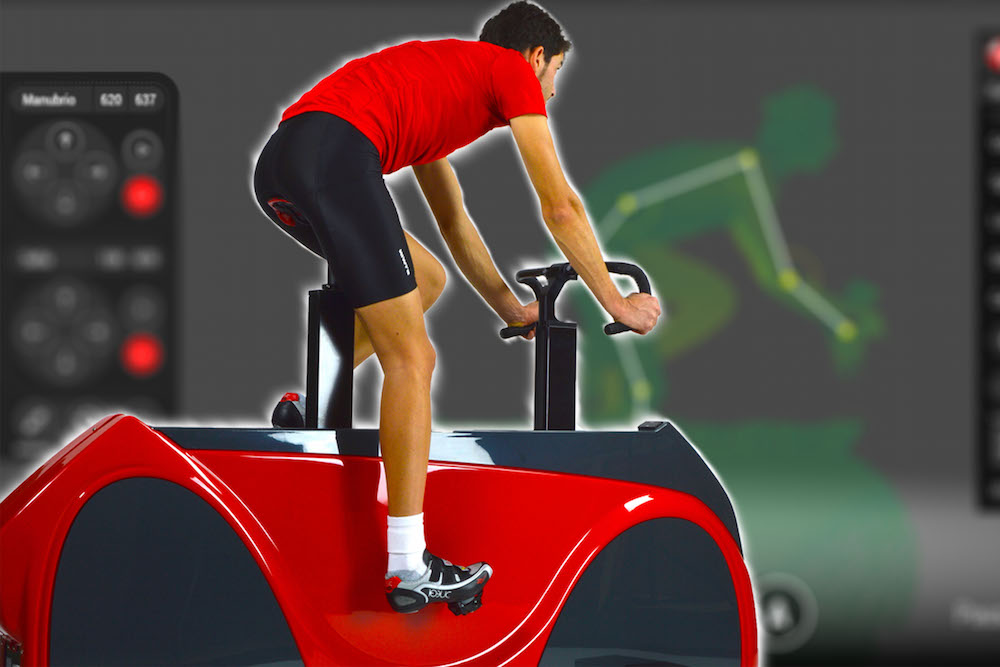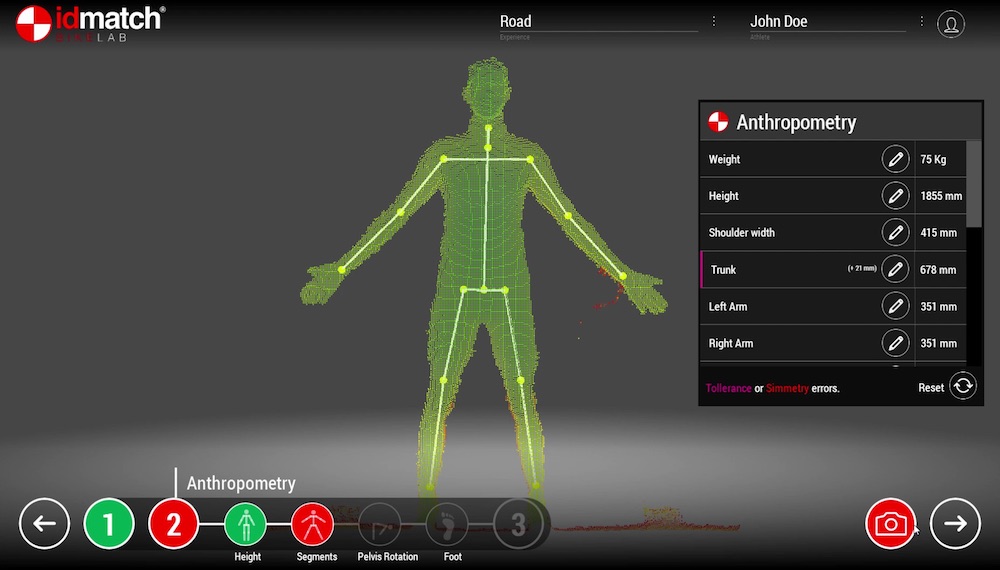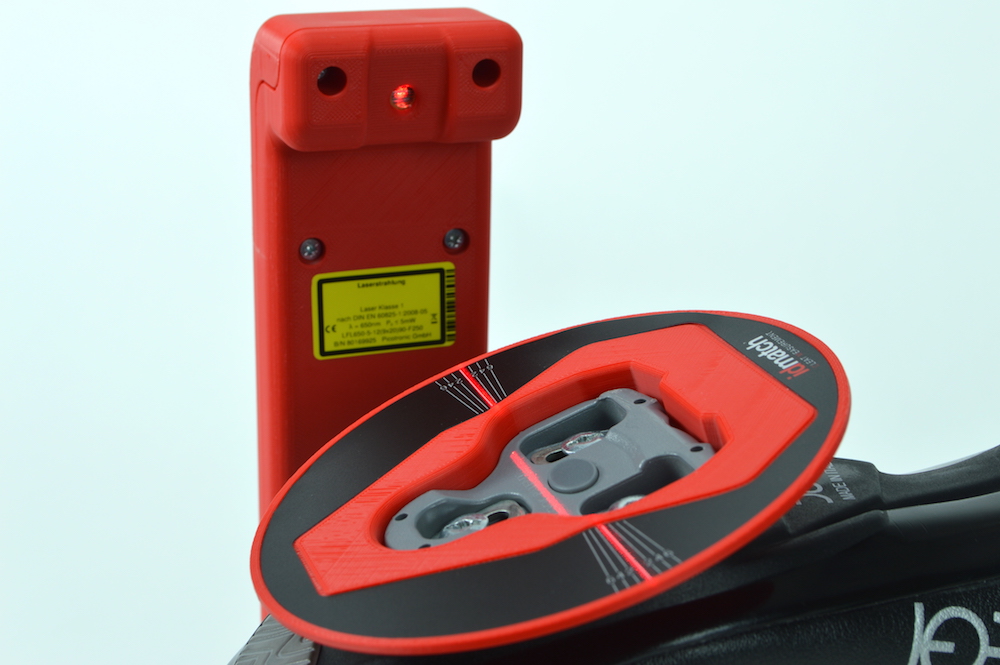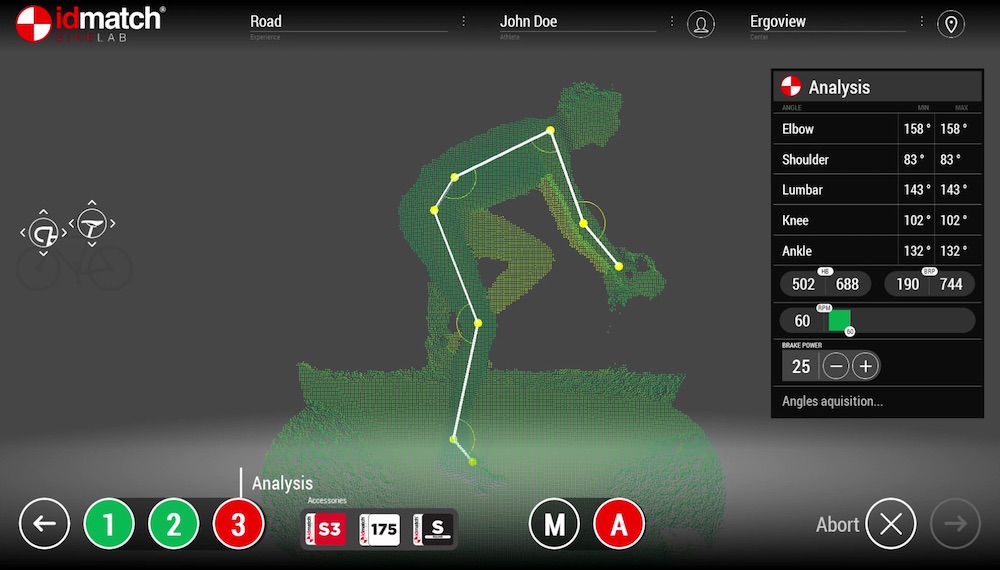New idmatch bike fitting system automatically adjusts your fit as you pedal
3D imaging is used to accurately measure pedalling dynamics


The key to a good bike fit is working out your body’s dimensions. But with people having different degrees of coverage, it’s not easy to judge where their various joints are buried in their bodies and the length of their different bones.
Italian company idmatch’s solution is clever: it uses 3D imaging of the cyclist with a camera built into its fitting console to scan the direction and speed of movement of the limbs and torso. From this, its software can calculate automatically where the pivot points are in the skeleton: ankles, knees, hips, shoulders and arms, so giving it a precise measure of the lengths of the cyclist’s body segments and their position on the bike.

The process starts off with a static view of the body to take its dimensions and determine how flexible the rider is at the pelvis. The rider’s weight is input and any particular aches and pains that the cyclist is suffering are recorded, along with which muscle group they affect and their intensity.
>>> Cycling neck pain: how to treat and avoid it
Using an old fashioned foot measurer, like that found in a shoe shop, the fitter measures the dimensions of both feet. The bike fitting software uses this as an input to determine the preferred crank length.

idmatch sells a laser guided cleat positioning jig, which lets the fitter set up a rider’s cleats in the correct position based on the foot measurement. This measures the distance from the rear of the shoe to the cleat. There is a set of templates for each of the different cleat systems, which clips over the cleat and ensures that the centre of the cleat is set up in precisely the right position and at the right angle.
Automatic position adjustment
Then the rider mounts a special interactive stationary bike and starts to pedal. Based on movement and joint angles scanned by the cameras, the system automatically moves the bars and the saddle up and down and backward and forward relative to the fixed position of the cranks. Since the system is automated, the rider just continues to pedal as the adjustments are made.

Its aim is to optimise the cyclist’s position, based on idmatch’s sizing database. There are set-up data sets for different disciplines, so a rider’s position for cyclocross or a time trial bike will be different from that for a road bike. MTB and hybrid positions can also be tested, with a straight bar fitted to the smart bike.
>>> Is 'women's specific geometry' still relevant in 2018?
idmatch starts off with the rider’s existing bike, using laser scanners and a jig to determine their current position. These parameters are input on the system’s touch screen console as a starting point for the bike fit. The bike fitter doesn’t have to stick with the system’s scanned position, but can manually adjust position as well.
Saddle and bar recommendations
idmatch maintains a database of over 10,000 products from 300 brands, so that it can, for example, see whether you’d fit on a size medium Look Huez, what the saddle and bar height should be set at and what length stem is needed to match your fit.

idmatch has worked with Selle Italia and has divided available saddles into categories, so it can select the best saddle to match your anatomy. In my case, it recommended a medium width saddle without a cut-out, which matches my experience of testing lots of different saddles. idmatch has done the same with bar width and drop. Fit is calibrated with the rider in the drops, as this is the most extreme position adopted and needs to be comfortable if the cyclist is to make best use of the bars.
A full bike fit station includes a wide range of bars and saddles, which can be swapped quickly and are mounted so that they are all at the same relative position on the smart bike. idmatch also keeps a database of component dimensions for other brands. An output of the fit is the recommended bar, saddle and bike frame.
The system outputs the results of the fit as a pdf file which can be sent to the rider or accessed via a 2D bar code. It also keeps a history that can be referenced for a later fit. The laser jig used to find the current bike set-up can be used to adjust the rider’s current bike to the post-fit positions.
UK distribution of the idmatch system is handled by ZyroFisher.
>>> Five reasons you need a fresh bike fit
idmatch has been concentrating on the Italian market since its launch, but is now expanding into the wider European market and has plans to target the US and Chinese markets too soon.

Thank you for reading 20 articles this month* Join now for unlimited access
Enjoy your first month for just £1 / $1 / €1
*Read 5 free articles per month without a subscription

Join now for unlimited access
Try first month for just £1 / $1 / €1
Get The Leadout Newsletter
The latest race content, interviews, features, reviews and expert buying guides, direct to your inbox!
Paul started writing for Cycling Weekly in 2015, covering cycling tech, new bikes and product testing. Since then, he’s reviewed hundreds of bikes and thousands of other pieces of cycling equipment for the magazine and the Cycling Weekly website.
He’s been cycling for a lot longer than that though and his travels by bike have taken him all around Europe and to California. He’s been riding gravel since before gravel bikes existed too, riding a cyclocross bike through the Chilterns and along the South Downs.
-
 Positive signs for UK bike industry as Halfords cycling sales grow
Positive signs for UK bike industry as Halfords cycling sales growRetailer admits that the impact of Donald Trump's tariffs remains to be seen
By Tom Thewlis
-
 'We don't own gravel - it's a community thing': the spirit of gravel is safe, say British Gravel Championship organisers
'We don't own gravel - it's a community thing': the spirit of gravel is safe, say British Gravel Championship organisersCycling Weekly travels to Dalby Forest to ride the championship course and find out where we go from here
By James Shrubsall